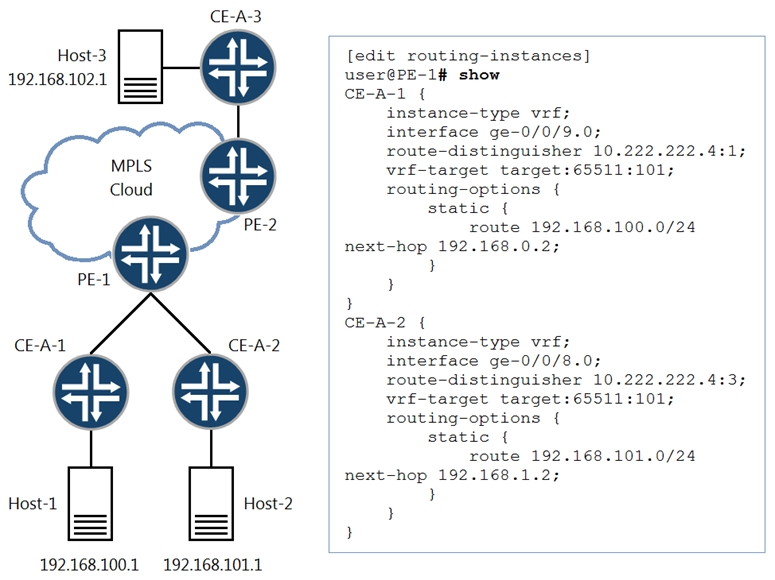
Expert Verified, Online, Free.


Referring to the exhibit, there is a Layer 3 VPN setup that connects sites CE-A-1, CE-A-2, and CE-A-3 together. Host-1 can communicate with Host-3, but Host-1 cannot communicate with Host-2.
What must you do to solve the problem?
NetworkGuy420
1 year, 7 months agokasqureshi
2 years, 6 months agosomanyquestions
3 years, 1 month ago